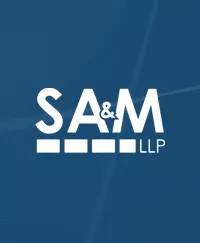For over 30 years, partnerships have been subject to unified audit rules that permit the IRS to examine a partnership’s (including an LLC’s) tax return and make adjustments at the partnership level that affect all the partnership’s members. To comply with the existing rules, LLC operating agreements generally provide for the appointment of a tax matters partner and grant that tax matters partner the right to interface with the IRS, the obligation to comply with the requirement to notify the members of the LLC of the commencement of the IRS audit and the terms of any settlement or other disposition.
Effective January 1, 2018, all new and existing partnerships will be subject to new partnership audit rules. The representative of the partnership will be known as the partner representative, dropping the familiar term “tax matters partner”. The applicable statute of limitations on auditing the partnership and making adjustments that will affect all the partners will be determined at the partnership level and will be determined, or extended, at the entity level.[2] The partnership representative may unilaterally extend the statute of limitations with the IRS on behalf of the partnership.[3] A partnership with 100 or fewer partners that in general are US individuals or C corporations may elect out of the unified partnership audit rules.[4] That is a significant increase in the size of a partnership eligible to elect out from the 10 or fewer individual partner limit on electing out of the unified partnership audit rules under pre-2018 law[5]. A partnership with pass-through entities as constituent partners may still qualify to elect out of the new rules if the pass-through entity partner discloses the identities of its members so that the master partnership can determine and certify that it has 100 or fewer direct and indirect partners who are US individuals (or their estates) or C corporations or foreign entities that would be treated as C corporations if they were US entities.[6]
All of the partners will be bound by the terms of any settlement, final audit report or court decision affecting the partnership.[7] In a departure from the prior approach, the income tax deficiency will be computed at the partnership level and assessed against the partnership computed applying the highest individual and corporate tax rate for each partner[8]. This is in contrast to the current rule under which the determination of an adjustment is made at the partnership level but the partners are liable for computing the effect of the adjustment on their own returns.[9] The partnership may opt out of liability for the partners’ taxes with the result that the tax burden will be passed through to the partners and computed at the partner level.[10] The election to opt out of the unified partnership audit rules must be made when the partnership return is filed in most cases.[11]
The partner representative of the partnership will have the standard 90 days in which to file a petition for the US Tax Court to review the IRS’s proposed action.[12] The partner representative, unlike a tax matters partner, does not have to be a partner or LLC member.[13] That new rule may add some flexibility for the sponsor of a syndicated program. Unlike the current rules, there will not be an opportunity for partners to file a petition for a redetermination of a final partnership administrative adjustment.[14] Inconsistent treatment by a partner or member requires notification by the partner reporting inconsistent treatment, similar to current law.[15] The new law has special rules on the timing of the assessment that permit the assessment and collection of a partnership adjustment in the year in which the adjustment becomes and non-contestable.[16] It will be up to the partnership, if at all, to cause the economic cost of the collection of the adjustment to fall on the partners in the partnership for the year audited rather than for the year assessed and collected. By contrast, under existing law, a final partnership administrative adjustment, whenever assessed, affects the returns of the partners for the year or years audited, not the year collected—the collection occurs at the partner level based on the pass-through of the adjustment on the partnership’s tax return for the year audited.
For example, if the IRS audits a partnership’s return for 2015 and the examination is completed in 2018, any adjustment would be reflected in the tax liability of the partners for 2015. Under the new law, when the partnership adjustment is final, the IRS will collect the deficiency from the partnership. An audit of the partnership’s 2018 return might be completed in 2021 and collected at that time, but in the interim between 2018 and 2021 several placements might have added partners who were not investors in 2018 but who would have their share of available cash reduced in 2021.
As a practical matter, LLC operating agreements should reflect these new rules, appoint a partnership representative, describe the partnership representative’s authority to hire professionals, interact with the IRS, inform the partners of any developments and determine whether to elect out of the unified audit rules if there are fewer than 100 direct or indirect partners, and determine what events the partnership representative should be required to inform the partners pursuant to the terms of the operating agreement. Existing LLC operating agreements for LLCs with more than 100 members, with pass-through entity members that cannot or will not reveal their constituent members’ identities or with foreign members should be analyzed to determine if the operating agreement authorizes the manager to conform the authority of the tax matters partner to these new rules when they become effective.

For more information about the Tax Practice Group, contact Chair, Michael E. Shaff at
_____________________________________________________
[1] Internal Revenue Code (IRC) §6221 et seq. all as in effect after December 31, 2017.
[2] IRC §6232(d)(2).
[3] IRC §6232(d)(2).
[4] IRC §6221(b)(1).
[5] Old Section 6231.
[6] IRC §6221(b)(2).
[7] IRC §6223.
[8] IRC §6221(a). The statute authorizes regulations for adjusting the tax rate to be used when the highest rate is not appropriate.
[9] IRC §6225(b).
[10] IRC §6225(a).
[11] IRC §6227(c).
[12] IRC §6235.
[13] IRC §6223(a) (“Each partnership shall designate*** a partner (or other person) …”)
[14] IRC §6223(b).
[15] IRC §6222(c).
[16] IRC §6232.
